Culture
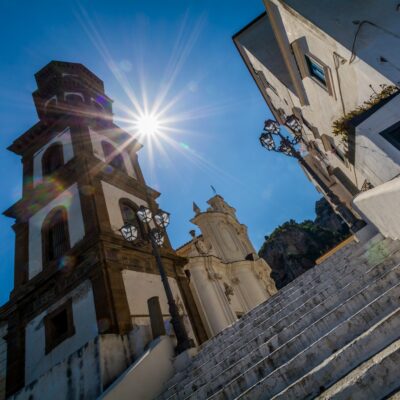
Costiera Amalfitana reveals the contacts that it had during ancient times with people of different culture in cultural aspects which characterize it and which are the result of a wise and balanced mix of elements of various origins. Artistic taste for decorations at marquetry, big architecture and small house shapes, traditional music, cooking all these elements represent the most tangible evidence of this culture. There are numerous traditions that are still handed down from generation to generation: ancient recipes, remedies, legends and customs constitute an intangible heritage of incalculable value.
Within all these aspects, the visitor can realize the atmosphere and the evolution which generated them coming into contact with most true and authentic part of the territory. In fact a thousand year culture, will be showed on a territory which has to be explored in each aspect and whose knowledge allows to live unforgettable experiences.
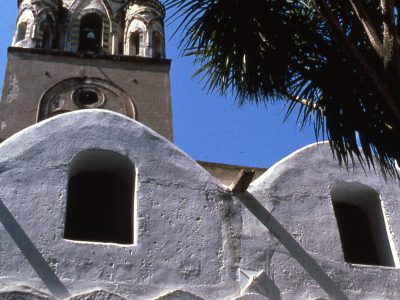
Amalfi
Amalfi with its effort of history offers unique aspects from the cultural point of view. It is possible to catch that mix among architectural styles that convert in local stone artistic motifs of oriental taste. The Cathedral, churches, palaces with columns in atriums, farmers’houses once scattered among terraces reveal the ancient wisdom of those who wanted to make functional and big at the same time their own town. Amalfi culture expresses itself through its heritage of handmade knowledge: production of the famous bambagina paper which took place in factories built along Chiarito valley, the production of iron objects to build ships and the transformation of wheat in flour to prepare pasta.

Atrani
Atrani sharing with Amalfi a lot of its history, elaborated the same cultural and architectural motifs that we find in the most famous sea town. Even though there are not numerous monumental buildings (worthy to visit San Salvatore de’ Birecto Church, where the doge received political ordination, Collegiate Church dedicated to Patron Saint, S. Maria Maddalena, Saints Grotto, in a private property, with elaborated cave paintings, and some minor churches) overseas influences take shape in the built up area structure with houses built at a very short distance among them, rather one on the other, defining public covered passage ways and narrow alleys so that only one person at a time can walk along it. This structure, together with the small area occupied by the village, make Atrani the municipality with the highest living density of the 15 municipalities of Costiera Amalfitana.

Cetara
Cetara offers to the visitor a sight on a world rich of sea-culture atmosphere. From the architectural point of view, the village reproduces the model of the centre, open towards the beach but at the same time on the most exposed side it has been built a watching tower to protect the territory. Sea culture is also found in gastronomy where the strong point is represented by blue-fish of small size fishing, anchovies and tuna; these two products represent the most important part of local economy both directly through fishing and through transformation. Colatura di alici, which is the most famous product of Cetara, represents the most important example of local culture: to preserve anchovies they were salted and at the same time the liquid which resulted from the salted period produced a dressing which changed the taste of a simple boiled pasta dish. People from Cetara departing from a poor product of fishing brought back to existence the ancient and noble roman garum.
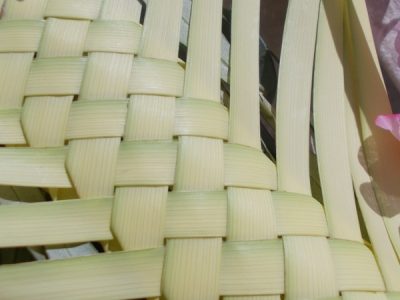
Conca dei Marini
Conca dei Marini, with its history of maritime centre of the Republic, preserves important material and immaterial cultural witnesses diverted by these contacts. It is important the manufacturing of palm-tree leaves. Every year, since centuries, on the occasion of Palm Sunday, local women weave, the most soft parts of palms, in complicated baskets or vertical sheaves which reproduce crosses or simple gold yellow embroideries. These works are preserved in the dark till the celebration during which they are blessed and distributed in houses. This element, together with the gastronomic one, represented by sfogliatella, which is the most characteristic product, reveals the mix of cultural factors developed in this place. On the one hand there is manual skill, on the other cake ingredients (according to the tradition the sfogliatella has been invented by local nuns of S. Rosa Monastery) which together remind us Mediterranean places atmospheres, which had been reached by boats from Conca during ancient times.

Furore
Furore culture is enclosed in the village shape: it is not a single centre but there are spread houses usually gathered around a church. Spoiling this particular urban layout, stressed by the crossing of the carriage which brings to Agerola and from here to Neapolitan area, it has been decided to create a front street decorated by murals which embellish the external wall of many houses. During the years this project has brought here numerous artists who attempted to try to make Furore a painted village.
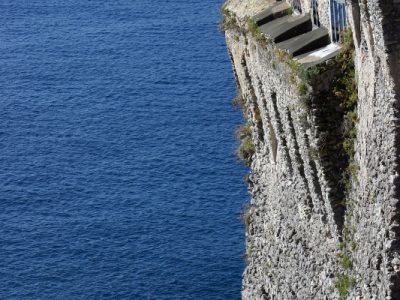
Maiori
Numerous churches welcome the visitor who can cover an itinerary where faith and culture are interweaved in each corner of the village. Towers and Thoro Plano castel illustrate, instead, Maiori defense features: particularly the sight form of the castle allows to understand how in case of danger, it could represent a defense for most of the population, having inside farmable lands and even a church. Culture, then, can be tasted through typical dishes of the coast centre, among which there is an out-and-out deliciousness: chocolate aubergines. Ingredients and the way to prepare this dish remind us of contacts had with faraway lands, where spices and aromas represented an important component of gastronomy. Maiori, furthermore, represents the centre where in the past lemon was most cultivated, and till last centuries plants reached the beach.

Minori
Minori culture can be understood walking through its small streets and entering the valley in the north area of the built up centre, where the ancient paper mill ruins welcome the visitor that cannot avoid being fascinated by these ruins which once produced a lot of paper. But it is also worthy to go among ancient walls of the roman villa which opens its rooms, to experts’admiration but also to simple curious persons, with mosaics of the holy place for nymphs – triclinium or with small thermal baths that the owner wants for its house not to forget town comforts. Or if you stop in one of pasta factories of the village, which produce handmade pasta of different sizes, so as once it was made in grater quantity, so that it was necessary to sun-dry it on the beach. Among classic “maccaroni” or “fusilli” prepared with a tool by housewives of yore it is possible to taste “ndundero”, a big gnocco which is cooked with Bolognese sauce on occasion of St. Trofimena, Minori patron saint.
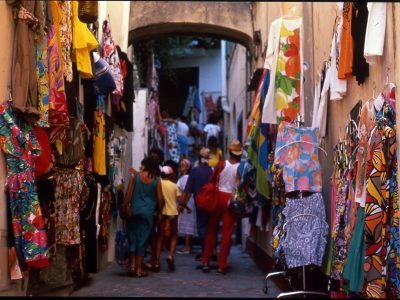
Positano
Positano, departing from a typical culture of a fishermen village, characterized by hard work and intensive use of resources that the very small available room offered, has been able to use the same results that this same culture had produced, results which find in the first voyagers of XIX century interesting users. From fishermen village Positano turned into the favourite destination of the international jet set which found in Positano that simple nature but at the same time sophisticated that was so appreciated in 1950s. Afterwards that enterprising spirit which characterized people from Positano when they were fishermen urged them on to cover other streets but always towards the direction of the mix between simplicity and sophistication: in this way the famous positano fashion was born, natural textiles with strong colours which generated clothes that in their seaming simple shape represent smart ladies’dream.
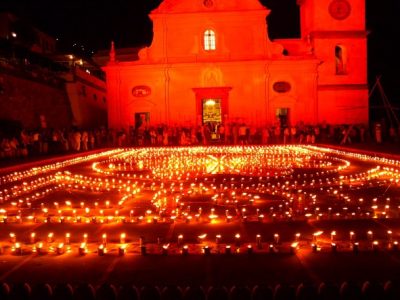
Praiano
Culture from Praiano is linked to sea world and to the strong devotion that inhabitants had for their protector saints. An element which it is more probable to find here than in other places of Costiera Amalfitana are voetive aedicules. These are small temples usually located at the street’s corners or in courtyards which accommodated images of the most venerated Saints or of the Virgin, which were venerated with lights and flowers. Exactly the presence of these candles lead to believe that voetive aedicules had a social role a part from a religious one: they were useful to lighten streets and especially crossroads in a period during which public lightening did not exist.
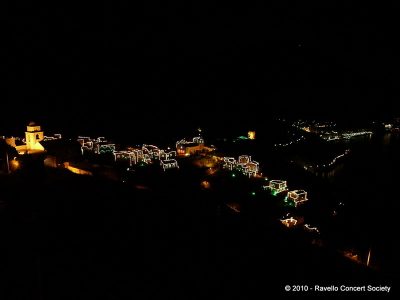
Ravello
Ravello image which strikes the visitor is the one of a very lively centre thanks to the numerous occasions, during the whole year, to be able to attend a concert in the wonderful Rufolo villa. Ravello is the town music par excellence, thanks to the visit by Richard Wagner in 1880 and to remind it since more than 50 years it is organized a summer classic music festival, that in the last years has also been enriched by no music performances; Ravello offers to the visitor its architecture beauties which derivate from the economic role that it had during Medieval time. Ancient patrician homes (patrician people were able to unify the ability of “bargaining” with available richness) are authentic jewels which reproduce local tastes and overseas artistic influences in the used materials. The principal square well represents the cultural urbanistic atmosphere, when Ravello, loyal allied, was able to change also from the urbanistic point of view, locating at the centre the three powers which represented the town: S. Maria Assunta Cathedral, the civil Curia, seat of the local judge, and l’hospitium domorum, the palace which belonged to the most prominence family from the economical point of view, Rufolo.
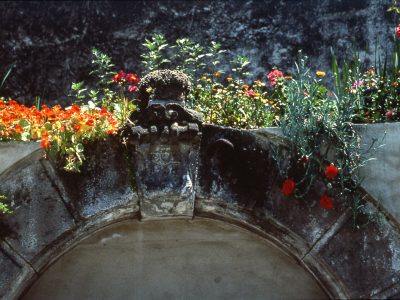
S. Egidio del Monte Albino
S. Egidio culture is enclosed within its village which is well preserved. The most famous family’s palaces (Ferrajoli in the different descents, Spagnuolo ecc.) collect the best architectonic witnesses of this territory: aragonese doors in Vesuvio stone finely decorated introduce into internal courtyards around which the palace with its components is built. This structure reminds of a culture and a social organization linked to farmers, where courtyard instead to be used to welcome guests was used to welcome the products coming from family’s lands. Every year these courtyards live again thanks to an event organized by local Proloco which joins this architectonic aspect to flavours and music and craftman traditions. To this world is also linked a typical dish: “pasta di sciuanelle”, a mixture of flour, water and lard, cooked in the oven, a kind of polenta which is eaten with beans and mushrooms.
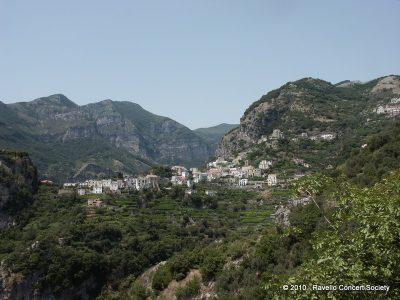
Scala
Those who visit Scala, above all in two localities (Pontone hamlet is the best preserved from this point of view) find a sight which rushes them in a period of architectonic glory and economic power. Walking through the small streets it is not difficult to meet houses that apparently are very simple but they preserve out-and-out decorative treasures with tuff marble pieces. This type of decoration combined to cooked clay use with colours which range from ochre to intensive red allow to re-create interesting motifs, reminding to overseas artistic influences, on churches and palaces facades. Considering this, it is important to be able to visit S. Eustachio Church, patronage of one of the richest families in Scala, or the typical Arabian bath which is often fund in the most important palaces and that became fashion for the rich local merchants.
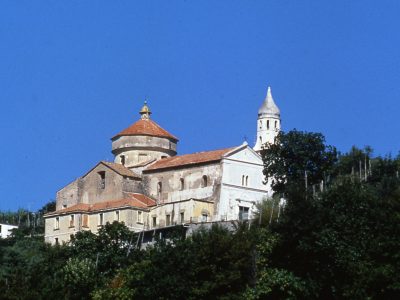
Tramonti
Tramonti culture is linked to mountain world and to the structure of the village and the most evident characteristics are the presence of numerous churches which represent the centre of the built up area. These are placed around a small square, almost a farmyard, or to a courtyard which represents the hub of daily life and of social relationships. Mountain customs and vineyards cultivation are yearly revived in numerous festivals which are organized in the different hamlets and that offer to the visitor not only particular tastes coming from season picked up products but also from glimpses of past life thanks to the re-peopling of some rural houses built up in stone or in various gardens.
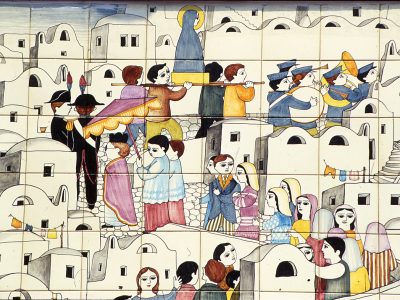
Vietri sul Mare
Vietri sul Mare has some cultural characteristics very different form the other centres of Costiera Amalfitana because of its gravitation around the Lombard Salerno more than around the byzantine Amalfi. The biggest architectonic structures so as the single houses witness a mix of genres and tastes that if on the one side re- propose Mediterranean motifs (the built-up area structure of the historical centre reminds of the intertwining of small streets of the villages of the southern Mediterranean bank) on the other side send back to a use of different materials compared to the original ones used in Costiera. The production of pottery, which found in Vietri sul Mare the starting centre since medieval time (the majolica floors of the most ancient churches of Costiera have all been produced in Vietri faenzere) made it become a permanent element of architectures: departing from big churches to small votive aedicules placed at the street corners.

Corbara
Corbara, thanks to its thousand-year history, offers to visitors, that too often cross it too fast to drive up to Chiunzi pass to reach Costiera Amalfitana, wide material and immaterial cultural heritage. It is possible to start from S. Bartolomeo Church, patron Saint of the town, to pass to those of S. Giuseppe or S. Erasmo, where it is possible to admire two paintings by Luca Giordano, exponent of Neapolitan painting of ‘600. To live local traditions visitors cannot miss an event organized in summer months: the descend of the angel. A man dressed as an angel descends from S. Erasmo Church along a route which gets down to the valley, and he stops 13 times while traditional folk songs, dedicated to S. Erasmo, are sung. This ceremony includes the sacred and the profane, linking the ability of woodcutters to descend cut wood thanks to rope ways to the valley with the tradition of the angel who had freed S. Bartolomeo from martyrdom.

